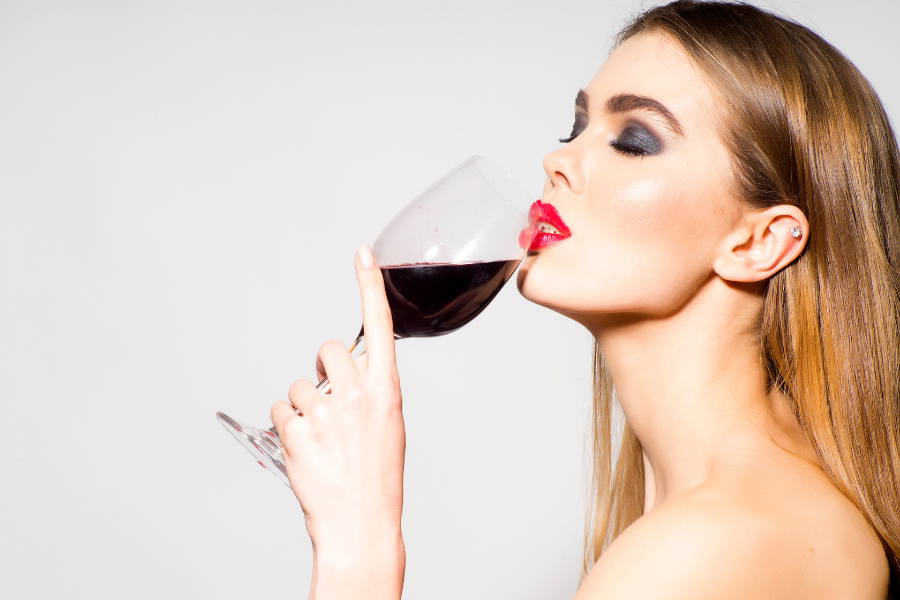You can’t escape it. The television commercials, movies, music videos, even your social media feeds are filled with lively photos of alcohol being enjoyed on the beach, at a bar, or at an invite-only party. Glamorizing alcohol has become one of the biggest contributors to alcohol consumption by adolescents and young adults.1
The idea that alcohol creates a social, fun environment is depicted in the videos and advertisements. Eventually, young adults build a positive connotation to drinking without realizing the negative effects of alcohol. Alcohol companies aren’t just making an impact on the younger generation. With up to 90% of all contemporary movies depicting alcohol consumption, and mostly in a positive light, research shows more people are picking up the bottle and creating unhealthy habits.2
Glamorizing Alcohol on Social Media
The influence alcohol can have on you as you scroll through your social media feed is increasing rapidly. This goes beyond a friend or coworker celebrating a random Tuesday evening with a bottle of wine. Now, major alcohol brands are investing large amounts of money to ensure you see their ads each time you open an app. A major increase in alcohol advertisement occurred throughout the pandemic.
The JAMA Network reports that for the week ending March 21, 2020, alcohol advertisement in the US increased by 262% year over year.3 While many people were stuck inside as restrictions tightened in 2020, alcohol brands worked their digital marketing magic to put their bottle or can inside the hand of attractive, young people frolicking on a beach. Their main objective is to give you the idea that if you couldn’t get to happy hour, then happy hour could come to you.
Continued after video:
Instagram stories are one of the most popular spaces to find luring photos of alcohol with engaging taglines or witty jokes. Companies must follow strict guidelines for their targeted audience to ensure the legal drinking age and other requirements. However, there are no stipulations that instruct companies to educate consumers on the dangerous effects of alcohol. Beyond athletes, models, and actors, brands also use social media influencers to reach even more niche audiences. The glamorization of alcohol leaves those targeted audience members with the impression that drinking enhances your social life. This likely contributes to the 25% of Americans 18 and older who report they’ve engaged in binge drinking at least once in the past month.4
Alcohol Consumption in Movies
Images of alcohol consumption can be just as influential when it’s not represented in an advertisement. Research shows exposure to others drinking alcohol in movies can subconsciously encourage the same behavior in the person watching the film.
In a study with young adults, half of the participants were asked to watch a film where alcohol consumption was largely connected to positive outcomes. The other group watched a film that showed devastatingly negative consequences, including job loss and a fatal car crash. Researchers discovered that the students presented with negative outcomes had a far less favorable view on alcohol consumption. However, the group that watched the film with positive connotations favorably viewed alcohol consumption. This is proof that glamorizing alcohol can drastically affect how young adults respond to unrealistic depictions.5
In research supported by the National Institute on Alcohol Abuse and Alcoholism (NIAAA), researchers found that in movies that spotlighted alcohol consumption, 57% of the films depicted no consequences to the user.6 In short, Hollywood glamorizes alcohol to the point that viewers believe excessive alcohol use increases social status, makes you look more appealing, and there are zero negative repercussions. The truth, however, is that the effects of alcohol use can be detrimental to your physical and mental health. It can also isolate you from friends and family.
Effects of Alcohol
Glamorizing alcohol creates the illusion that there are no negative impacts on your mental or physical state. But medical evidence proves that’s untrue. Some of the most notable effects of alcohol on the body begin immediately. And with long-term alcohol exposure, the body can begin to deteriorate in unrepairable ways.
Immediate effects of alcohol:
- Coordination: lack of ability to move or function properly
- Intestinal distress: overconsumption of alcohol can lead to stomach discomfort
- Slurred speech: the inability to articulate or finish complete thoughts
- Blackouts: alcohol can disrupt the brain’s ability to create memories, even while you’re awake
Long-term effects of alcohol:
- Hallucination: alcohol dependence over an extended time can cause hallucination events
- Liver damage: excessive drinking can prevent the liver from working properly or fail completely
- Thinning bones: research links alcohol use over time to an increase in osteoporosis
- Muscle cramps: alcohol can cause muscles to weaken, cramp, or even become unresponsive
Reach Out For Help with Alcohol Abuse Today
It’s critical to understand the truth behind the effects of alcohol addiction. Blocking out the glamorization of drinking is a way to determine if you or someone you love is negatively impacted by alcohol. Contact our caring Arizona treatment center staff now to see how we can tailor our highly successful program to your needs.
Sources:
[1] https://www.ncbi.nlm.nih.gov/books/NBK37586/[2] https://www.sciencedaily.com/releases/2014/05/140520162952.htm
[3] https://jamanetwork.com/journals/jamanetworkopen/fullarticle/2770975?resultClick=1&_ga=2.100919489.1585030296.1618165649-196997777.1618165649
[4] https://www.niaaa.nih.gov/publications/brochures-and-fact-sheets/alcohol-facts-and-statistics
[5] https://www.ncbi.nlm.nih.gov/books/NBK37586/
[6] https://www.ncbi.nlm.nih.gov/books/NBK37586/



